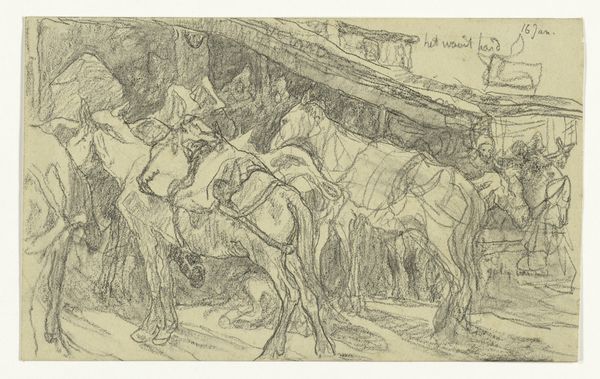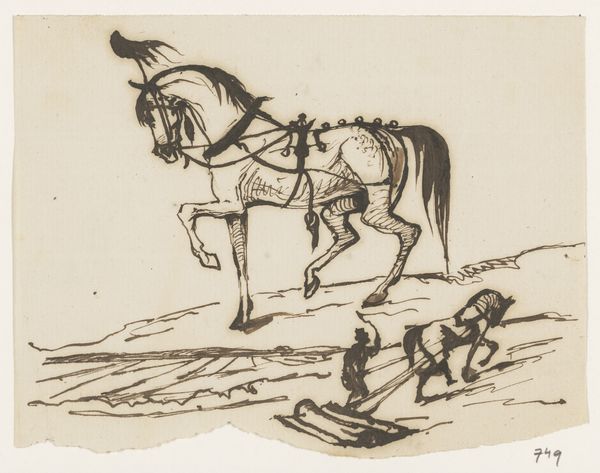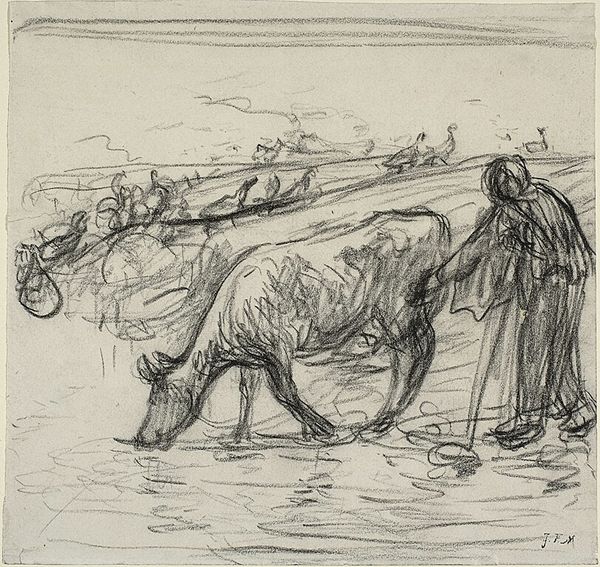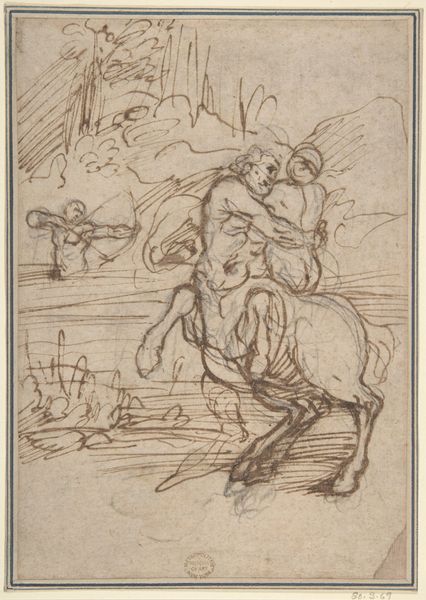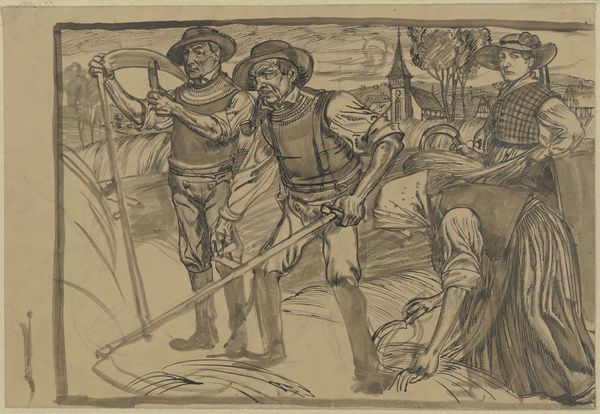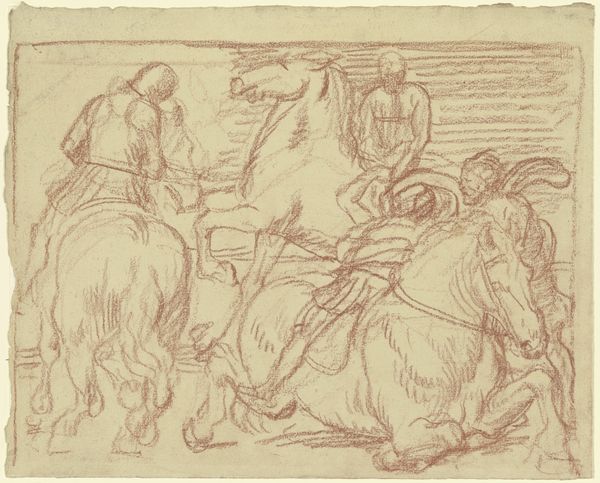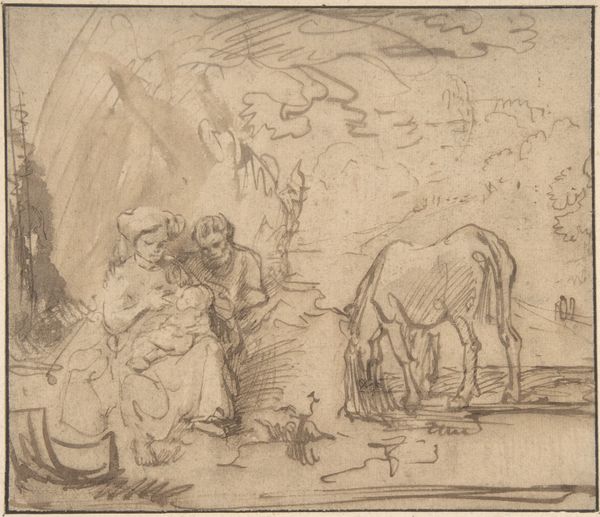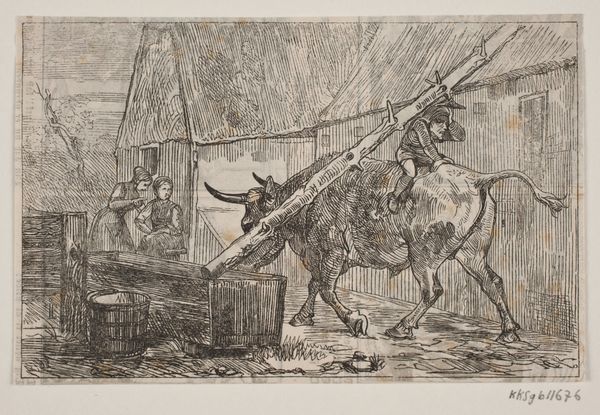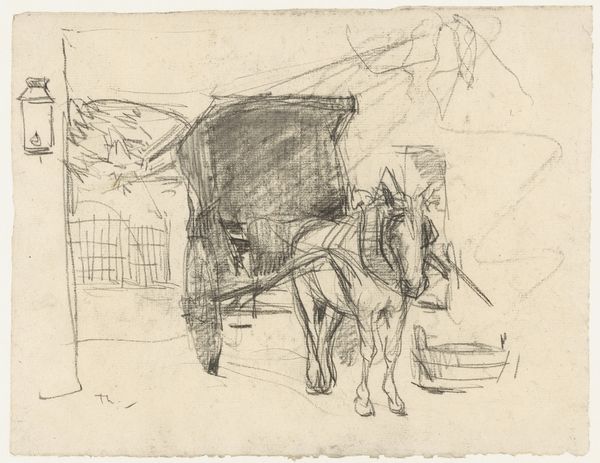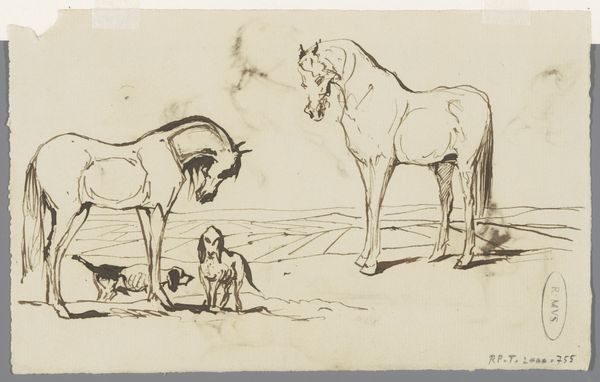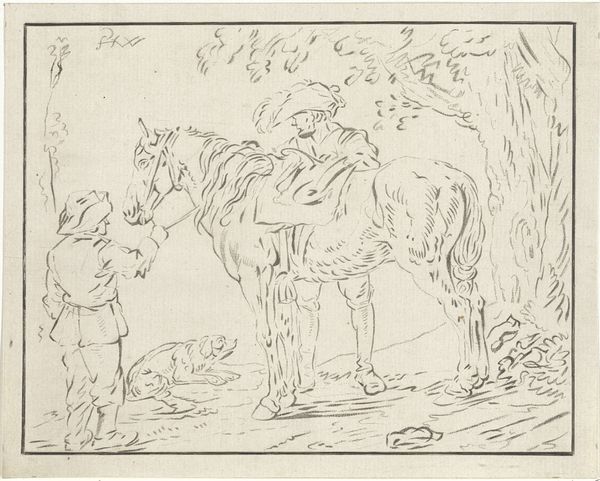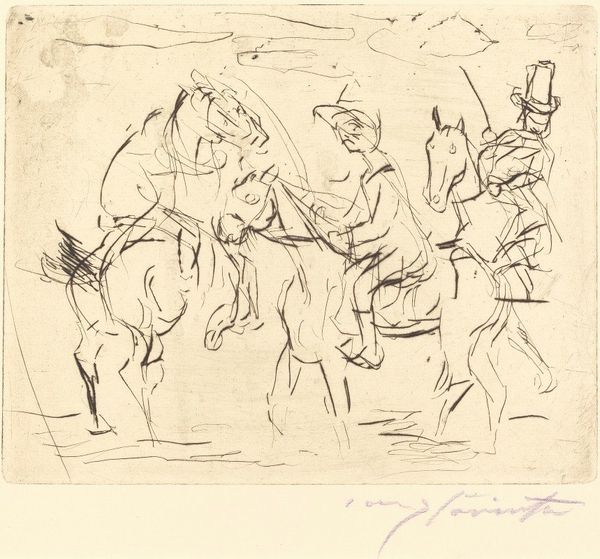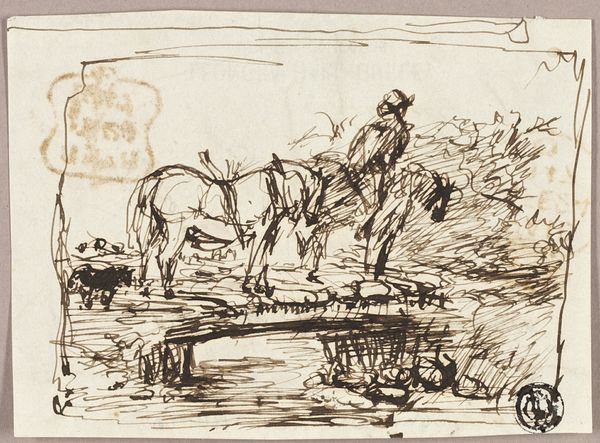
cardboard, drawing, plein-air, ink, indian-ink
#
cardboard
#
drawing
#
16_19th-century
#
quirky sketch
#
pen sketch
#
plein-air
#
landscape
#
personal sketchbook
#
ink
#
german
#
sketchwork
#
ink drawing experimentation
#
indian-ink
#
pen-ink sketch
#
sketchbook drawing
#
genre-painting
#
storyboard and sketchbook work
#
sketchbook art
#
initial sketch
Copyright: Public Domain
Fritz Boehle made this pen and ink drawing, “Man and Horse”, sometime in the late 19th or early 20th century. It depicts a man walking alongside a large horse, with a windmill in the background. The drawing evokes a sense of rural life, perhaps in the Netherlands or Northern Germany, where windmills were once a common sight. The image creates meaning through these visual codes, and is rich in historical associations: The horse and man suggest labor and the connection between humans and animals, while the windmill represents industry and the harnessing of natural resources. The loose, sketch-like style conveys a sense of immediacy. To fully understand Boehle’s work, one might delve into the social history of rural life in Germany during this period, exploring themes of industrialization and the changing relationship between humans and the environment. The role of the historian is crucial in uncovering these layers of meaning, drawing on archives, literary sources, and social histories to shed light on the context in which the artwork was made.
Comments
No comments
Be the first to comment and join the conversation on the ultimate creative platform.
